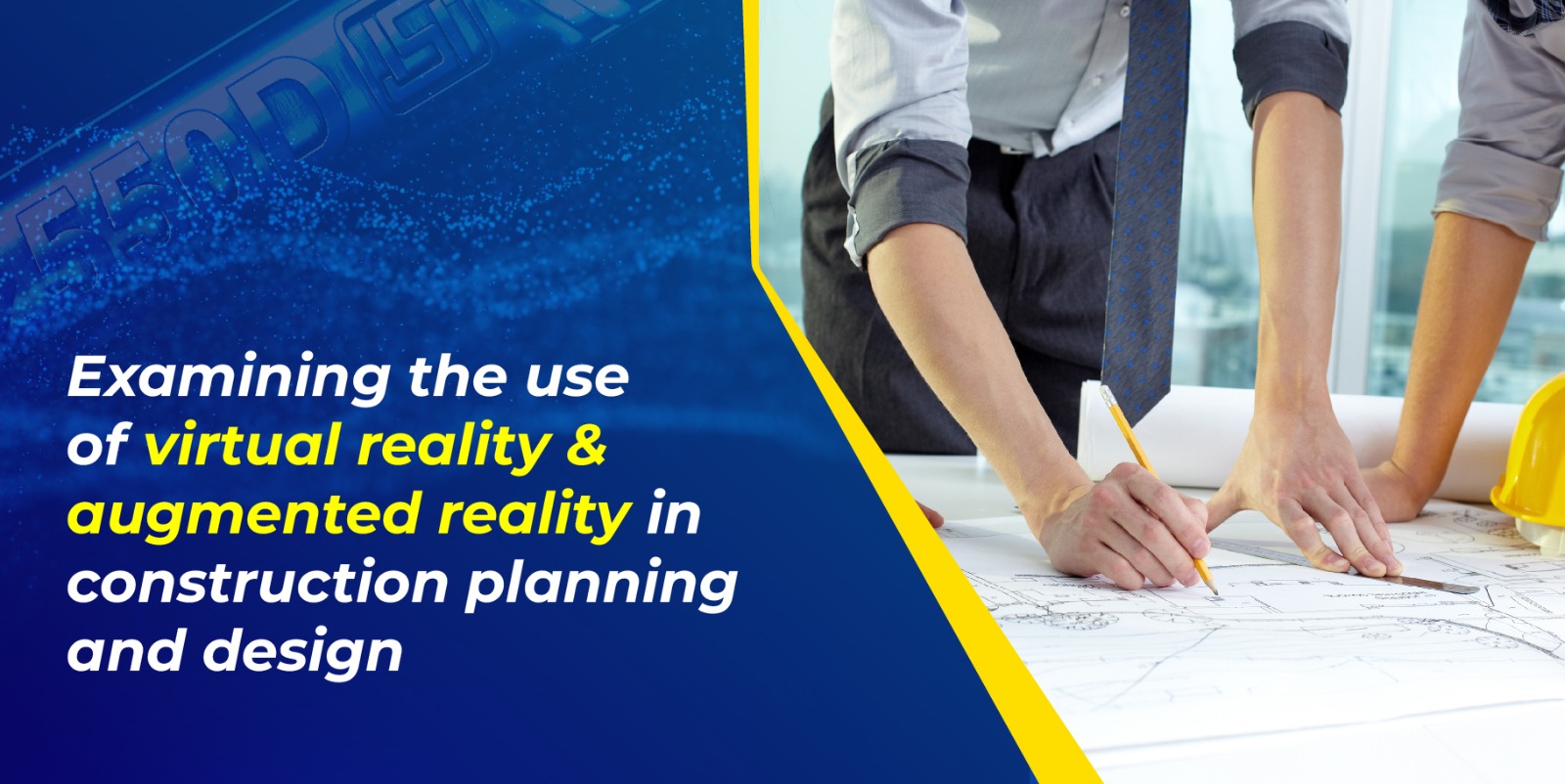Examining the use of virtual reality and augmented reality in construction planning and design
Even though, the recent developments and innovations have played a vital role in the construction industry, companies are slowly looking forward to the new age technologies. And out of the new technologies established, augmented and virtual reality are two of them.
Virtual reality and augmented reality allow the architects to take their planning and design work to a new level. Thus, this opens the avenue to gain amazing opportunities for the construction industry.
And with the money invested in construction projects, AR and VR could bring a boom and change the entire construction planning and design landscape. With the steady advancement of construction companies towards automated technologies, AR/VR could cut down overall expenditures by 90%.
What are the pros and cons of AR/VR in the construction industry?
The construction companies that successfully steer towards the newer and innovative technologies and integrate them into their workspace gain a competitive edge over others. And for the same reason, augmented and virtual reality can take innovators to the next level. But, before we move on to the depth of the topic, let us see how they are beneficial and their disadvantages.
- Reduces time and lowers the development expenses
Companies can employ AR/VR technologies to plan construction projects from the start to the end. It helps streamline the procedures involved in the development project and decreases the guesswork and, in turn, the time required to accomplish the task.
- Promotes Training Safety
The construction field is a high-risk field. And safety is the foremost priority of the contractors who work on the projects. However, it is the virtual reality solutions that help professionals create real-life events in a fully immersive and safe environment.
- Improves communication and collaboration
The virtual reality tools ensure a transparent project development process and promote productive partnerships.
Apart from all the above-mentioned benefits of AR/VR in construction planning and design, there are some limitations, too.
- Static environment and weather-sensitive equipment
Augmented and virtual reality equipment is often exposed to harsh weather conditions. The equipment works the best and is in optimal condition when the weather remains unchanged for a significant time.
- Requirement of a strong internet connection
While augmented reality tools and applications can work in offline conditions, real-time collaborations won’t be possible without stable internet connections.
- The need for a learning curve
The new applications related to augmented reality come with a steep learning curve. This might prevent the construction companies from investing in the technology. However, with the development of open-source mobile toolkits for AR, the cost of developing AR mobile apps is decreasing significantly. And now, even the small- to medium-scale businesses can invest in the technology.
Does Augmented Reality Enhance the Construction Procedures?
The augmented reality apps can see and interpret the outside world in real time and project images onto it. This helps in bringing outstanding gains to the construction industry. Additionally, the 3D blueprints obtained allow the project teams to avoid mistakes before the beginning of the construction work.
From ducting to the pipes, columns, and everything else, the teams can clearly understand where everything will be built. Thus, it becomes easier for them to make the changes before, during and after the project. While most AR and VR projects are in the planning stage, they can grow rapidly.
How does VR contribute to changing the construction workflow?
Construction is up and against the changing demands of building efficiency. It puts more pressure on the architects to discover the flaws and the issues at the early stages of the building work. On the other hand, virtual reality offers a rendering tool and practical planning of the project. The developers can widely use these tools to review the 3D realizations of the architectural designs.
Moreover, while bidding on any new project, the firms can use virtual and augmented reality to take up more complex cases. They can simply give the stakeholders a tour of the future space through VR. The immersive VR headsets can allow the architects and the designers to obtain a better sense of space before it exists.
Conclusion
When you speak about the construction industry, investing in AR and VR technology must not be considered a minor add-on. They have become an integral segment of the construction industry. Shyam Steel has also started integrating AR and VR technology into their work operations to streamline the procedures and simplify things.
The industry will become more competitive and dynamic with more advancements in the augmented and virtual reality world. Thus, it is no longer that these two technologies will play a great role in changing the world landscape of construction.

